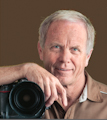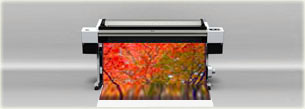
About the Photographer / Master Printer:
 Barry Westhead: Having inherited from his father, Jim, a passion for black & white photography and darkroom techniques, left photography to follow a career in electronics, software and Industrial Engineering until the arrival of digital photography.
Barry Westhead: Having inherited from his father, Jim, a passion for black & white photography and darkroom techniques, left photography to follow a career in electronics, software and Industrial Engineering until the arrival of digital photography.
“The time will come when you will be able to make the entire photograph electronically, with extremely high resolution and the enormous control you can get from electronics, the results will be fantastic. I wish I were young again.” Ansel Adams, in his 82nd year, 1984.
Ansel had it right. . . And with the evolution of digital imaging an Industrial Engineering practice ( IPeng.ca ) converged with the advancing field of imaging in manufacturing as well as a growing personal appreciation of art in nature and the outdoors (also gratefully inherited).
While continuing to apply digital imaging technology in commercial and industrial applications, Barry additionally discovers and honours art inherant in simple subjects and places like the waters and valleys of the Humber River Region. He also specializes in the art and techniques of precision reproductions and archival Giclée print editions for artists of other media. Providing this service affords the satisfaction of combining current state-of-the-art lighting, photographic and printing technologies with knowledge, skill and an appreciation for the work of other artists.
Running upwards of 80km a week with two Border Collies on trails throughout the forests and fields of the Humber River Watershed and Niagara Escarpment provided ample opportunity for scouting photographic sites and images, along with a gratitude for the calm inspiration and silence provided by connecting with nature and Our Mother Earth.
About the Images:
While many of the images here are single exposures, others are "HDR" (High Dynamic Range) photographs more aptly depicting the full range of tones and hues of nature. The art of producing high dynamic range images involves capturing with a digital camera multiple versions of the same scene ranging from highly underexposed to highly overexposed settings.
Artful blending and "tone mapping" of these multiple images enables the presentation of an image that aids the viewer's eye to perceive the full range of hues and brightness that would have been experienced when viewing the actual scene.
While viewing a scene, the human eye can discriminate a brightness range well beyond 100,000 : 1, while the best film and digital cameras struggle to capture a range of 4,000 : 1, and state-of-the-art giclée printers with fine art papers can barley achieve a range of 250 : 1. That's less than 1/500 of what we see everyday in real life!
Several technologies and skills combine to produce high dynamic range fine art photographic prints.
The essence of HDR photography is to emulate with canvas and inks the secrets the Old Master and Renaissance painters developed centuries ago to achieve radiant colours and “glowing” skin tones using just the available colour palette of the oil-based pigments of their day. Master Painters learned to use colour combinations and contrasts that would make our mind's eye see the paintings as if were viewing the actual scene. Picasso's assertion: “Art is a lie that makes us realize the truth.”
Ansel Adam's mentor,
Alfred Stieglitz,
put it this way;
"I offer the print as the equivalent of what I saw and felt."
Barry Westhead, FEC, P.Eng.
!!! ---------------------------------- NEWS ---------------------------------------- !!!
Art2Print image - cover of King Tapestry Magazine - with feature article on page 4
Art2Print image on the cover of York Regional Art Council's Fall Discovery Guide
Art2Print image in University of Toronto, Trinity College - Trinity Magazine
Green Buttons below are public domain, white buttons are password protected:
---------------------------------------------------------------------------------- 9 - Events, 10 - Misc:

What is a Giclée Print?
Giclee (pronounced “zhee-klay”) is a French word that means “to spray or spurt liquid.” The word was originally derived by famous printmaker Jack Duganne from the French verb "gicler" meaning "to squirt.” The term "giclee print" describes an evolution in contemporary printmaking technology. Giclee art reproductions are produced from high resolution digital cameras or scanners and printed with archival quality inks onto various media that include canvas, fine art paper, and photo-based paper. The giclee printing process provides better detail and color accuracy than any other means of reproduction currently available.
A Few Images:
(Click on any image in these slide shows to enter full screen viewing mode.)
- Nature Portfolio II
- TREES --- A TRIBUTE
- TREES --- A TRIBUTE (No Flash)
- Comercial Signage and Website Images
- An Event
- A Study
Next Event:
Coming soon ----------

Studio / Gallery:
Kleinburg, ON
Canada
Phone: 674 222 2207
BWesthead@Art2PrintImages.com
If this page does not display correctly: Get the current verion of Adobe Flash Player HERE